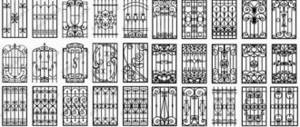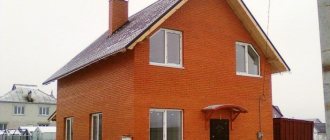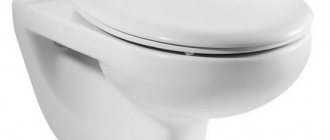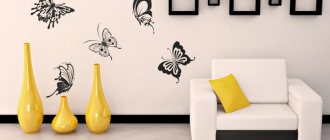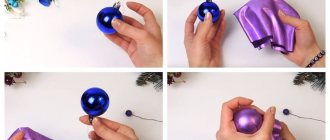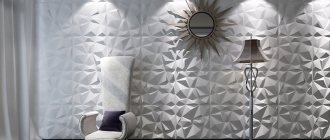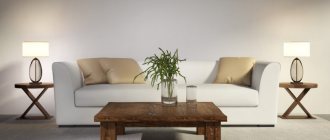Foam facade decor has recently found widespread use, which is facilitated by the relatively low cost and originality of appearance. The interior with foam decorations changes beyond recognition. You can purchase and install ready-made decorative parts, which significantly reduces the time for arranging the facade. However, when doing the work with your own hands, you create the opportunity to realize your wildest fantasies and long-standing ideas. If this activity is carried out well, it will be almost impossible to distinguish the imitation from stone or marble sculptures.
Foam facade decor is widely used today
What are the advantages of the material
Polystyrene foam is a universal polymer material that is widely used for various purposes. Most often, this term refers to slabs made of polystyrene foam and polyurethane foam. Polystyrene foam has a number of positive qualities: light weight, ease of cutting, thermal insulation properties, whiteness, and fairly low cost.
Polystyrene foam - light, warm, inexpensive - excellent material for decoration
This material has different densities and grain sizes. Dense structures can easily be confused with plaster and natural stone, even marble. This effect serves as the basis for using foam plastic as decorative elements. The ease of processing the material makes it possible to produce any shapes, patterned carvings and other products. Foam stucco molding is practically indistinguishable in appearance from gypsum creations, while it is light and easy to manufacture.
Along with the positive qualities, the material also has one important drawback. This polymer (especially expanded polystyrene) has a low melting and ignition point, and when burned or simply exposed to high temperatures, it can release substances harmful to humans. This condition is important to consider when using it. In addition, foam plastic breaks easily, and therefore no mechanical loads should be applied to it.
When a façade is being installed, polystyrene foam can be used in several grades: PSB-S-15, PSB-S-25 and PSB-S-35. The last type of material (which is the most expensive) is considered the most durable, so it is used in harsh climatic conditions. The most widely used foam is PSB-S-25, which has a density of 20–25 kg/m³ and a permissible bending load of no more than 0.26 MPa. It is also important that the water absorption of the material is practically equal to 0.
Material capabilities
Firstly, the possibility of using finishing materials for decorating a private home. Numerous elements are shown on the façade of the large two-story structure. However, this does not mean that foam facade decor can only be used on mansions. In any building you can install individual elements or other details, including those of an exclusive nature.
Foam plastic will help realize any ideas for interior and exterior decoration
The following are the most common decorative elements made of polystyrene foam for the facade:
- moldings;
- cornices;
- rustic;
- columns;
- pilasters.
When performing them, different techniques can be used:
- stucco;
- bas-reliefs;
- thread;
- ornaments;
- patterns;
- vases;
- flowerpots, etc.
Secondly, the cladding can be made from standard parts, exclusive elements, purchased ready-made or made by hand.
Finishing the facade of a house with foam plastic may include the following solutions:
- foam cornice with thread;
- porticos;
- architectural modillions;
- rustication of the basement or the entire corner of the building;
- foam carved window frames;
- console elements;
- portals and flutes.
Thirdly, decorative foam for facades has the following advantages:
- fairly fast and simple production of parts;
- low cost;
- high service life;
- no size restrictions;
- the ability to carry out work independently;
- absence of significant additional mechanical loads on the wall and foundation, taking into account the low specific weight of plastic;
- fairly high compressive strength;
- no risk of rotting and mold;
- high resistance to any climatic conditions in all regions of the country;
- long-term color retention.
What we produce
We have been manufacturing decorative parts from reinforced foam plastic for 14 years. Over the years, our products have significantly changed the architectural style of various buildings throughout the country.
Your home will be among them if you take advantage of the offer and buy decorative elements for the facade of a cottage (house) from us. The company's collection is formed taking into account fashion trends, as well as market requirements. Today it includes:
- interfloor, crown, and basement cornices;
- door and window frames;
- columns;
- pilasters;
- rusticated stones;
- keystones;
- brackets;
- balusters;
- other elements, including details that allow you to create three-dimensional ornaments for the ceiling.
What you need for decoration
To decorate with polystyrene foam you will need a set of tools and additional materials.
In order to equip a polystyrene foam façade, you should take care in advance of the following consumables and components:
- polyurethane-based mounting foam;
- foam glue;
- dowels 12–20 cm long, umbrella type;
- reinforced fiberglass mesh;
- acrylic type putty;
- façade primer composition;
- paint for facade work;
- mineral plaster.
The following tool will help you carry out all the work efficiently:
- glue gun;
- “string” for cutting foam plastic;
- knife;
- jigsaw;
- hacksaw for metal;
- putty knife;
- paint brush;
- construction mixer;
- electric drill;
- screwdriver;
- plumb line;
- roulette;
- metal ruler;
- protractor;
- building level.
Technological stages
Finishing the facade with foam plastic, although it is considered a fairly simple undertaking accessible to anyone, is carried out in several stages, taking into account certain principles.
Decorating with polystyrene foam is a simple task, the main thing is to follow the steps
The following main stages are distinguished:
- preparatory work;
- production or purchase of decorative elements;
- surface leveling;
- installation of foam plastic with its reliable fastening in the right place;
- application of protective and finishing coatings.
The preparatory stage begins with the development of a general facade design project. At this stage, the design style and the number, type and size of decorating elements are determined; a diagram of their placement is drawn. Next, the surface is thoroughly prepared for the application of polystyrene foam:
- surface leveling;
- cleaning the installation site from dirt and grease stains.
Installation of foam decor includes the following processes:
- Alignment of the facade structure on which the decor is planned to be installed. As a rule, such areas include cornices, window sills, certain areas on the wall, and jambs of window and door openings. Leveling is carried out by applying plaster.
- Installation of decor. Facade foam is attached with a special glue designed specifically for this material. In particular, you can o. The adhesive composition is applied to the entire back side of the part, and then it is pressed to the installation site and held until it is stuck with glue. When installing large parts or in cases where they protrude more than 10–12 cm above the wall surface, the fastening is reinforced with dowels or anchors. To install them, holes are carefully pre-drilled in the foam. If such a need arises after installation, then drilling is done after the glue has completely cured (2–3 days). Filling elements are installed in appropriate places on the wall. When installing parts in a vertical position on the wall, it is recommended to ensure that they are pressed for 30–40 hours.
- Sealing joints and seams. This operation is carried out using special facade sealants, which are applied with a facade brush. After the composition has dried, the joints are grouted. Merolith S1 can be recommended as such a sealant.
- When a façade decor made of coated polystyrene foam is envisaged, a number of additional works are carried out. A thin layer of primer is applied to the surface of the plastic. After it has hardened and sanded, the façade elements are coated with acrylic paint in 2 layers.
Common types of architectural elements made of polystyrene foam
The shapes and decor of the building are constantly being improved. So, now there is a noticeable trend towards reducing the overall weight of the structure. At the same time, those who build a house will never give up interesting and unusual forms, and most importantly, practical ones. When working with polystyrene foam facade decor, you can come up with many original ideas. However, there are elements that have already become classics and have many distinctive features.
Decorative columns
Figure 2. Columns made of polystyrene foam
Polymer columns in the current construction conditions are not a structural link, but a purely decorative one. They come in rectangular or round cross-sections and come in a variety of sizes and styles. As for appearance, they, like traditional columns, consist of three parts: base, body and capital. However, even metal supports are decorated with polystyrene foam, or pipes are decorated with it.
Pilasters
If we consider classical architecture, then with the help of pilasters the walls were given the appearance of support. Visually, this element is similar to a column, but in fact it is a decorative protrusion. The part is made not in volume, but in relief form. The pilaster consists of the same parts as the column, and they are assembled separately.
Architectural profiles
Since they differ in appearance and shape, they carry certain functions:
- façade cornice. This is one of the main elements of the facade. Installed in different places: under the roof, between floors. The selected size and shape of the product depend on the geometry of the structure;
- horizontal decorative profile. Visually similar to the facade variety, it only serves as a “separator”. With their help, they divide the house into levels;
- window sill elements. The place of their installation is the base of the window opening;
- corner profiles. They decorate the corners of openings for windows and doors;
- "rustic siding" One of the ways to rusticate the facade of a building. There are several installation methods.
Pediments
Figure 3. Foam pediments
This decor is most often found on the following architectural structures: classical Greek temples, Renaissance and neoclassical buildings. As a rule, it is a triangular-shaped part with stucco on each side. Sculptures are often installed along the pediment field to complement the exterior.
Arches
Most often these are semi-cylindrical structures. Their role is purely decorative. Foam arches are installed above windows or doors; they are used to decorate “false” windows and columns.
Keystones
In architectural terms, these are cornerstones mounted above an arch or vault. Since now such an element can easily be made from polystyrene foam, it is used to decorate gates, doors, windows, ceilings, etc. The keystone allows you to fully realize the design idea, thanks to the variety of models. It suits both classic and modern styles. Installation of polystyrene foam stones is quite simple. Recently, to increase their strength and rigidity, a special coating has been provided.
Corner elements
Figure 4. Decorative foam corners
This is one of the techniques for decorating the corners of the house, which, as a result, get a more reliable and durable appearance. Most of the manufactured parts are made in the form of tiles, with slightly beveled ribs along which rainwater flows.
Balustrades
Serves as decor for stairs, terraces, balconies and so on. The structure is a parapet supported by volumetric “pillars”. Sometimes it serves as decoration for the houses themselves, which indicates respectability. There is also an option when windows are trimmed with balustrades (they look like supporting supports).
Rosettes
It is a round or oval stucco molding with an ornament in the center (most often it is an open flower or an animal’s head). Often found in richly decorated facades.
Decorating with foam plastic
The production of shaped elements from foam plastic, first of all, involves its careful cutting. When carrying out such a procedure, crumbling of the material should not be allowed. That is why its cutting is ensured by a heated “string”. If the composition is made up of several parts, then the accuracy of their alignment should not exceed 1 mm.
To obtain neatly cut parts, use a heated string
In general, the production of decorative foam elements is carried out in the following order:
- Drawing up a sketch of the decor or selecting a ready-made idea with drawing all the details, methods of their articulation, places of attachment, choice of colors.
- Drawing the element on foam plastic in full size, and so that the material can be cut.
- Cutting out the intended shape from foam plastic.
- Strengthening the decorative element. For this purpose, a fiberglass mesh is fixed using an adhesive composition applied by spraying to form a layer with a thickness of about 2–2.5 mm.
Painting a foam ceiling
Using dyes with aggressive components to paint ceilings made of foam plastic boards with your own hands can cause damage to the products. In particular, compositions with the addition of acetone and alkyd additives can corrode the material. The most suitable option in this case is neutral water-based paint. Water-based paint is available in construction stores in a fairly wide range.
Thanks to the wide variety of colors, it becomes possible to choose any color scheme for decorating the ceiling space. Quite often you can find surfaces decorated in silver or bronze. Applying paint using a soft cloth allows you to imitate aged plaster stucco. Also, the decor for the ceiling made of foam plastic can be bright or have a contrasting pattern.
Foam stucco
Facade stucco is usually made of gypsum and is considered a very common decorative element. Recently, stucco foam has become a worthy competitor to such parts. It is light in weight, so it can be easily mounted on the wall. The facade of a house with similar decor looks no worse than with a classic design.
Foam stucco molding perfectly replaces gypsum molding, both in terms of time and financial costs
Of course, facade stucco molding is more complex to manufacture, since it is a three-dimensional figure. It is best to use finished products that are made by pressing in the factory. However, you can do it yourself, but for this you should use the densest foam plastic - PSB-S-35. Such figures as curls, three-dimensional flowers, bas-reliefs, etc. are cut out of it.
Decorating the facade of a house with polystyrene foam has gained wide popularity. The simplicity of manufacturing and installation allows you to do everything yourself, while the decor is difficult to distinguish from the classic options - plaster, natural stone.
Foam facade decor has an attractive price. In addition, such products have an original appearance.
Decorative elements, despite their low cost, are not inferior in their reliability, durability, and service life to decor made from other building materials.
Stylish stucco on the ceiling made of polystyrene foam - 8 photos
When decorative stucco molding is used on interior walls, it practically obliges you to adhere to the classic design style. However, foam molding on the ceiling can fit perfectly into a more modern interior design. This decor looks especially interesting as a decoration for a chandelier, as well as cornices and moldings with built-in LED lighting.
Also read: 35 ways to use LED strip in the interior
Distinctive features of foam decoration
Foam decorations for facades are produced by pouring into special molds.
Attention! When installing foam plastic products on the facade of a house, it is necessary to use a special protective coating.
It is necessary to increase the resistance of foam plastic products to external negative influences, increase its strength, and extend its service life.
There are many reasons why ordinary buyers should purchase decorative elements made of foam plastic.
Manufacturers offer facade decorative elements in a different color range, and at very affordable prices.
Polystyrene foam does not have high reliability, mechanical resistance, or durability, but with the help of modern technologies all these minor shortcomings can be easily eliminated.
Advice! Facade decor made of expanded polystyrene (foam) without additional processing is appropriate only in places that are reliably protected from the effects of the environment.
For example, you can use façade elements made of foam plastic to decorate the cornice, which is located under the roof slope. This area is reliably protected from moisture, and the material is not at risk of mechanical damage.
The facade decor made of polystyrene foam, made in the form of arches, must be treated so that weather conditions do not spoil its appearance. Sometimes decorative elements made of polystyrene foam are used in conjunction with other materials that will allow the decoration to be used for much longer.
Among the recent fashion trends, we note the option of non-standard decoration of the external walls of a private house.
Foam plastic decor for facades is lightweight and easy to process, which is why the material is in demand among architects. It is the decor made of foam plastic that allows the owners of country cottages to turn original design ideas into reality.
Styrofoam molding in the interior - 10 photos
Most often, imitation stucco foam is used on the ceiling and walls of the interior.
To improve the appearance and quality of such stucco decoration, a finishing layer of putty, paint or a special protective layer is applied to it. This will achieve a smoother, plaster-like surface, although it will require additional materials and labor costs, which will significantly increase the overall cost of the repair.
A protective layer, paint or cement-adhesive composition is applied to foam products after they are installed on the walls or ceiling. In addition, a fine mesh is used during installation, which enhances adhesion and helps hide the joints between individual segments. As a result, your foam molding will meet the highest quality requirements.
Photo of decorative stucco molding made of polystyrene foam on the walls and ceiling in the interior:
Also read: Stylish DIY cement decor - ideas with photos
Decorative stucco molding is gaining increasing popularity not only in interior design, but also on the facades of private houses and cottages. See the article about elements of façade decor with original photographs.
Original ideas for decor
Foam plastic decor for the facade is a way to give the building some romantic warmth.
Advice! If you complete the upper part of the residential building with a foam decorative entablature and add decorative columns to it, the house will become a real castle.
Such a house, decorated with figured decor made of polymer material, will become a source of pride in front of your guests. Decorative chips applied to the façade decor made of polystyrene foam can make your home more original.
Among those architectural elements that can be made from foam plastic, we highlight:
- moldings;
- carved cornices;
- console fragments;
- modillions;
- design of the basement of the house
Types of façade decor coatings
We apply an even coating in two layers with intermediate drying. The final coating thickness is 2 mm.
Mastic quartz coating
Quartz coating. Durable and solid. Gives the surface of the decor a stone-like texture. Apply by spraying in 2 layers with intermediate drying. Color – from light beige to beige
Mastic marble coating
Marble covering. Softer than quartz, but durable and hard. Applies smoother and more economically. Application method: broaching. Suitable for molded products. Color - all shades of milky.
Polymer cement coating
Has increased durability and moisture resistance. Ideal for multi-storey buildings. Products with this coating have a fine-grained surface. Apply by spraying in two layers with intermediate drying. Color ranges from white to light gray.
High-quality installation extends the life of façade decor by decades! Take care of this in advance and carry out installation work in accordance with the rules that we described in our booklet - instructions.
Installation
Interesting fact: You can revive and decorate the facade of a house or the interior of a building using foam plastic decor. This material is easy to process; any type of facade decorative parts can be made from it: cornices, stucco molding, columns, any functional and decorative products.
Distinctive characteristics of foam decorative elements
The decor of the facade of a polystyrene foam house has some distinctive characteristics:
- affordable price of products;
- ease and speed of installation of finished products;
- the possibility of decoration without the involvement of specialists;
- minimum weight that does not lead to additional load on the foundation of the building;
- long operational service life;
- excellent water-repellent characteristics;
- increased strength;
- environmental friendliness and resistance to decay processes
Installation work associated with the use of polymer makes it possible to carry out installation in any climatic conditions, regardless of temperature indicators.
Installation of decor on the facade of the house
When carrying out such work, you must follow the algorithm of actions. First you need to carry out preparatory work with the surface on which the decor will be attached. To do this, remove the remains of the old plaster from the surface, remove dust and dirt. Armed with facade plaster, it is important to eliminate all internal irregularities.
Advice! If voids are identified, you can use a cement solution to level them.
Then they mark the places where the decorative façade elements will be attached. If some elements of the product protrude by 10-15 centimeters, you will have to strengthen the structure with dowels driven into the walls of the house in advance. Before starting work related to the design of the foam plastic facade, professionals recommend checking the evenness of the surface.
The next stage of installation work will be diluting the glue and applying it to the back side of the decorative fragments
When attaching them to the wall, a little force will be required to improve the quality of adhesion of the glue to the surface being designed.
Attention! Be careful when working with decorative fragments, as the product is fragile.
The installation process is completed by sealing the fastener gaps with foam or sealant. After it is completely dry, you can remove their remains with a spatula.
Next, a high-quality primer of all decorative elements is carried out using a special solution. At the final stage, the manufactured polymer decor is painted with acrylic dyes according to the design project. To increase the service life of products, professionals recommend painting 2-3 times.
Applying additional protection to façade decor is a mandatory stage of finishing work. This will protect the finished product from sudden temperature changes and high humidity.
Features of manufacturing foam decor
There are strict requirements for the polymer that is made for facade finishing of houses. The material for production is PSB 25f. It has all the most important characteristics and qualities in order to be used in exterior wall decoration. Thanks to modern automatic equipment, you can burn and cut contours, create products of different sizes and shapes. In order to achieve reliable protection of the created element from high humidity and sudden temperature changes, sheets of polymer material are coated with a reinforcing compound. For example, you can treat a sheet of polymer material with mineral mixtures created on the basis of acrylic paint.
Next, the sheet is sent for drying. In order for the polymer not to lose its technical and operational characteristics, it is necessary to withstand a certain temperature regime. As soon as the protective layer has dried, the workpiece is sent to the last stage of production: stripping and polishing.
How to make decor from foam plastic by hand
Returning to the issue of making facade decor with your own hands, let's look at the technical and practical aspects of the foam products themselves and the most frequently asked questions on this topic:
- how to make decor from foam plastic
- do-it-yourself foam trims
- DIY foam crafts
- do-it-yourself curved cutting of polystyrene foam
The main criterion for deciding to buy ready-made façade products or assign a task to the façade designers who carry out the insulation of your home is the geometric shape of the elements that you want to apply on the façade of the house. You've probably very often seen the facades of houses with simple frames around the windows and two or three-step eaves under the roof overhang. Simple rectangular rusticated stones are also often found at the corners of the house. This kind of facade decor is made manually by facade workers when performing facade insulation.
The simple rectangular shape of the decorative elements allows you to make them yourself right on the spot. The elements, like the wall of the house, are reinforced using the usual technology for reinforcing insulation on the facade - glue, mesh. The corners of the parts are additionally reinforced with special corners. It's another matter if you want to use architectural decorative details of complex geometric shapes. Roundings, waves, many steps, convexities - such details distinguish the imitation of architectural elements from their real application on the facade of the house.
The complexity of the geometry of the products does not allow reinforcing the foam with a protective layer manually. Therefore, in this case, there is one correct decision - to buy ready-made facade decorative elements from the manufacturer.
Houses of the same type are a thing of the past: moreover, this applies not only to private buildings, but also to multi-storey buildings. People want their homes to be unique and special. To create a unique exterior of the building, facade decor made of foam plastic is used: you can create a real masterpiece with your own hands.
The positive properties of the material made it popular:
- affordable price,
- a light weight,
- resistance to temperature changes and ultraviolet radiation,
- moisture resistance.
This decor will last a long time without losing its original attractiveness.
Until recently, facade finishing elements were made exclusively from concrete and plaster. Such decorations were heavy and quickly deteriorated due to high humidity. In addition, concrete and plaster parts increased the load on the load-bearing elements of the structure, so sometimes it was necessary to abandon such heavy decorations.
Modern designers use lighter materials to decorate facades. Facade decor made of polystyrene foam is easy to install and durable. Unlike wooden and plaster structures, the material is not afraid of moisture. Compared to stone products, polystyrene foam is lightweight. By choosing the desired shade from a wide range of colors, you can highlight the main color of the building or choose a contrasting finish.
- An undeniable advantage of expanded polystyrene is its resistance to alkalis, water, acids, and mineral oil.
- The material is easy to cut and glued using mastic, gypsum or cement mortar. Even a novice master can decorate the facade on his own.
- The material does not contain hazardous chemical compounds and does not burn, and also has good compressive strength.
- All decorative elements that will be made of polystyrene foam are odorless and are not subject to rotting or molding.
- Due to its light weight, stucco molding is quite easy to install.
Taking into account a number of the listed advantages, our company offers the production of decor from foam plastic. Decorative elements are used not only for exterior decoration, but also for interior design. Expanded polystyrene is also useful when restoring old buildings. Facade decoration elements are used to improve the appearance and style of a building. Also, finishing elements will protect areas of the structure from climatic influences. Facade elements increase the thermal insulation of a building, improve noise insulation and increase the service life of the building.
Decorative stucco molding made of polystyrene foam - a modern alternative to plaster
Unlike more traditional gypsum products, stucco foam does not lose its appearance over time, is not susceptible to impacts, is easy to clean and is not afraid of moisture, which allows it to be used in places of high humidity, for example, in the interior of a bathroom or kitchen.
Imitation of stucco foam is made from sheets and granules of different sizes and grain sizes. As a rule, finished cornices, columns, moldings and other elements of stucco decor in store windows are presented unpainted. Modern industry also offers consumers a variety of foam products for interior decoration, which are covered with a special film that allows them to imitate marble columns, wood or stone.
This is what decorative foam molding looks like before installation:
Now let's take a look at the photo of decorative stucco foam in the interior.
How to make decor from foam plastic with your own hands
Foam molding can be used for self-installation. Many architectural elements will help make your home beautiful: windows, window sills, pediments, cornices, pilasters, balustrades. Each element of the facade is treated with a special coating, so we can confidently say that the material is resistant to external influences. Small decorative elements can change the exterior of a building beyond recognition.
Manufacturing and installation stages:
- The parts are cut out by contour thermal cutting using a hot wire. In industrial conditions, you can pre-program the shape of the product and cut it on a computer machine with maximum accuracy.
- After applying the reinforcing layer, the contact of the foam with the external environment stops. The part for facade decoration is covered with fiberglass mesh, which protects against alkalis.
- Next, a deep penetration cement-adhesive mixture is applied, which forms a film about one and a half millimeters thick. After this treatment, the parts become resistant to ultraviolet radiation and no longer attract dust. Film is a good base for painting.
Since façade decor can imitate natural materials, it can be used to decorate various areas of the building. The variety of finishing coatings allows owners to choose imitation stone, wood, plaster, and marble. Foam facing stones are used in corner areas. Externally, they are no different from granite or marble. Due to the protrusions relative to the walls, a beautiful relief is formed.
Since installation of decor is not particularly difficult, it is often done independently.
In order for the material to last a long time, you should know the important rules and regulations when installing foam decor with your own hands:
- At the place where the decor is installed, clean the surface from dirt, mortar, and mold. To do this, you can use mechanical means or chemicals. Ideally, the base for installation should be level, clean, and completely dry.
- If the surface has deviations from the plane, it should be leveled.
- Check the old plaster for voids: they are eliminated before installation.
- After preparing the base and marking, the material is fixed with an adhesive mixture; glue must be used, since it gives the foam a tight fit to the supporting structure. Excess uncured glue is removed with a spatula. The joints of the decor and the base are glued with joint compound.
- Then they are additionally secured with dowels with the caps recessed by three to four millimeters. Depending on the weight, size and type of products, you can use embedded parts and anchor devices.
The use of various installation techniques allows you to create optical effects of masonry: horizontal and vertical directions, offset, diagonal. The vertical arrangement of the material gives solidity to the building, and by laying out the elements across the column, you can give it grace.
Technology for the production of decor from foam plastic (expanded polystyrene)
Facade and interior parts made of polystyrene foam are made by cutting using computer technology. A heated steel string is used to form certain contours. The fitting of parts is pre-entered into a computer program, which is why the accuracy is measured in microns. In addition to cutting out the required contours, the elements are given strength by spraying them with a special elastic composition, which protects the decorative elements from the effects of water, alkalis and temperature changes. The surface of the finished decorative elements is similar to the plastered surface. As building thermal insulation, the most common are polystyrene foam boards (EPS) in accordance with GOST 15588-86.
As a result
The use of affordable interior decor is quite capable of giving the facade and interior a decent and respectable look.
